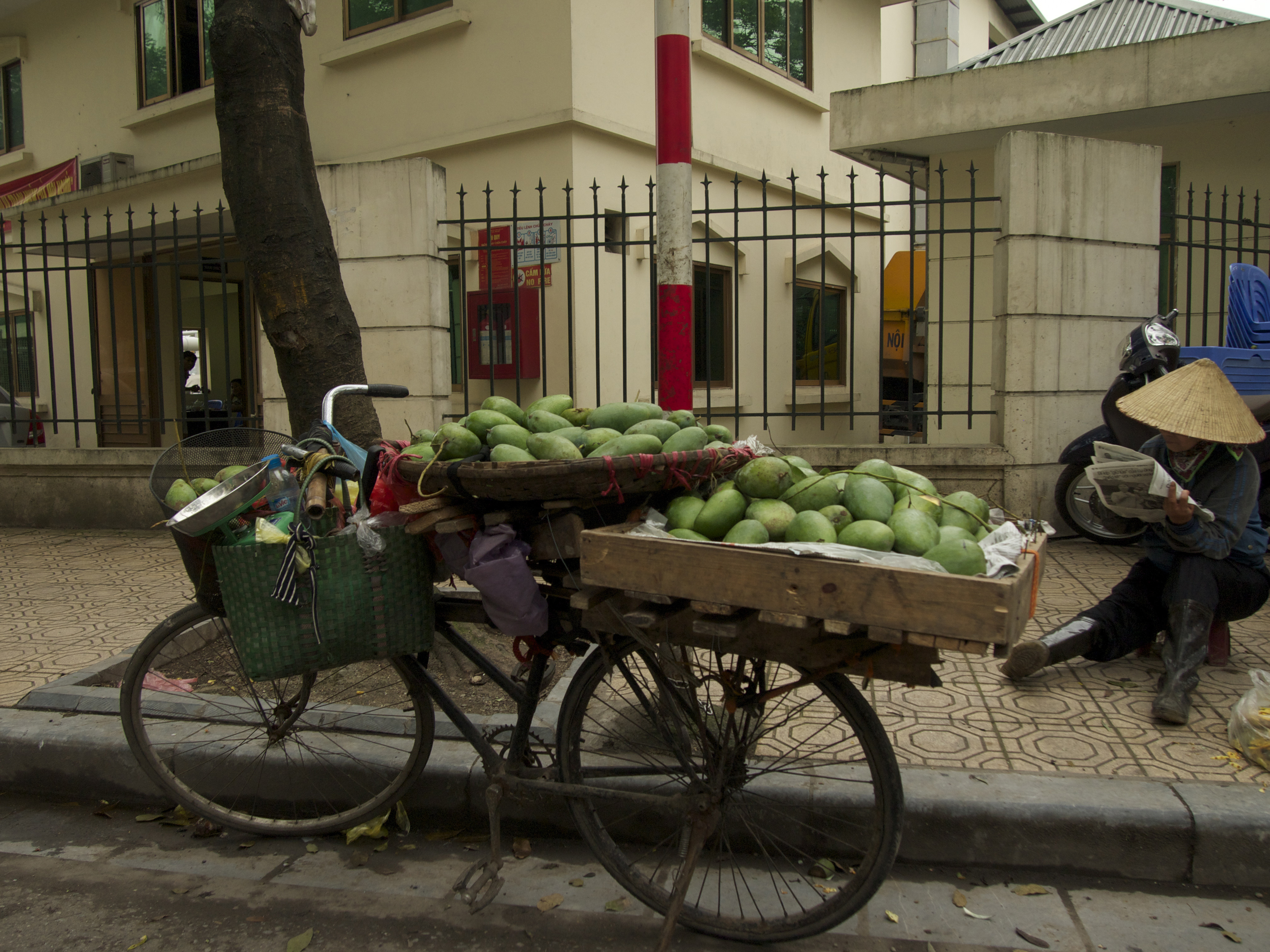It’s been a month and half since I was on the streets and in the markets in Hanoi. The fruit vendor’s bamboo baskets have changed but maintain a similar shade of green from the unripe mangoes in June to the granny smith green guavas of early August.
Yesterday was the last day of summer holidays and Ms. Ten Year Old wanted to bake something for her snack for the first day of Grade 5. The abundance of guavas sprang to mind and I thought about adapting our carrot bread recipe but could not find any large, apple-sized guavas and had to settle for the plum-sized ones instead. Since the smaller guavas could not easily be grated without including some of the populous seeds I turned to a banana coconut bread recipe in Naomi Duguid’s Homebaking that requires 3 cups of pureed bananas for inspiration.
The variety of guavas I used are unripe/semi ripe and are to be eaten that way, like an apple. So I needed to first make a puree before continuing with the remainder of the recipe. I’m also a sucker for a crunchy crumb topping on my quick breads or muffins and had some leftover in the freezer from a large batch baking session back before I left. That topping had oats instead of the coconut I have suggested in the recipe below.
- 2 pounds (1 kg.) green unripe/ semi-ripe guavas
- 2 ½ cups all-purpose flour
- 1 ½ cups whole-wheat flour
- 2 teaspoons baking powder
- 2 teaspoons baking soda
- 1 teaspoon ground cinnamon
- 2 or 3 ripe bananas (depending on size), mashed to make 1 cup of puree
- ½ pound (225 grams) unsalted butter, room temperature
- 1 ½ cups of sugar
- 2 eggs
- 2 teaspoons vanilla extract
- 1 cup unsweetened grated coconut
- ⅓ cup brown sugar
- ¼ cup all-purpose flour
- ¼ cup unsweetened grated coconut
- 4 tablespoons unsalted butter, chilled
- Preheat the oven to 350F/180C. Grease and flour two 9 X 5 inch loaf pans.
- Peel and roughly chop the guava. Place in a medium sized pot with 1 cup of water. Bring to a boil, cover, lower the heat to medium low and cook for about 15 minutes. Check to see that all of the water has not evaporated (if it has add another ⅓ cup) and give a good stir to make sure that some of the guava has not stuck to the bottom of the pot. Recover and cook for another 15 to 20 minutes. The guava should now be soft. Transfer the guava to a blender and blend for about a minute until you have a puree.
- Set a fine mesh strainer over a bowl. Working in stages pour a third of the mixture into the strainer and use a spatula to press the puree through the strainer leaving the seeds behind. Repeat with the rest of the puree. Measure out 2 cups of puree into a medium sized bowl - this should be all of it; if you have more keep to make a nice smoothie; if you have a little less top up with some banana puree. Mix in 1 cup of banana puree and set aside
- As the guava is cooking prepare the crumb topping. In a small bowl use a fork to combine the sugar, flour and coconut. Add the butter in chunks and mix with back of fork or fingertips until coarse crumbs are formed. Set aside.
- In a medium bowl combine the flour, baking powder, baking soda and cinnamon.
- Using a mixer, beat the butter and sugar until light and fluffy. Add and mix in the eggs and vanilla extract. Beginning with the fruit puree, alternating with the flour mixture, stir in about one cup mixing until evenly combined. Once the puree and flour mixture have both been combined the batter should be smooth and evenly combined. Stir in the coconut.
- Spoon the batter into the greased loaf pans. Sprinkle each loaf with half of the topping.
- Place the pans on a baking sheet on a rack in the centre of the oven and bake for about 45 minutes or until the tops are golden and a cake tester/ toothpick inserted into the centre comes out clean. Transfer the loaves to a cooling rack removing from the pans about 30 minutes later. Allow to cool completely before wrapping tightly in plastic wrap.




